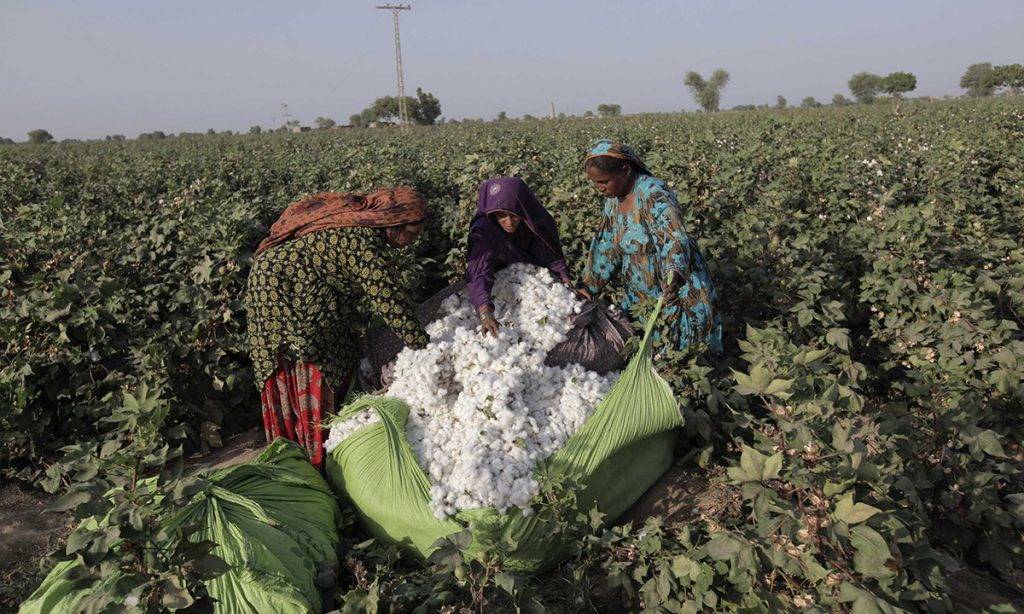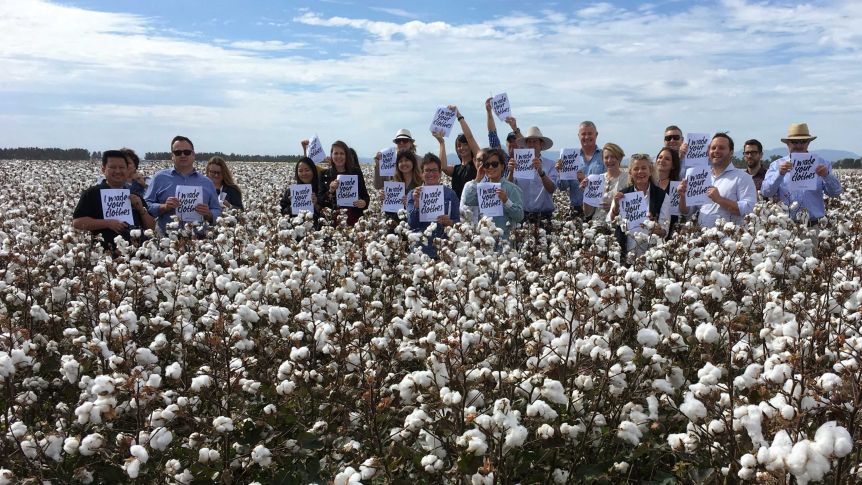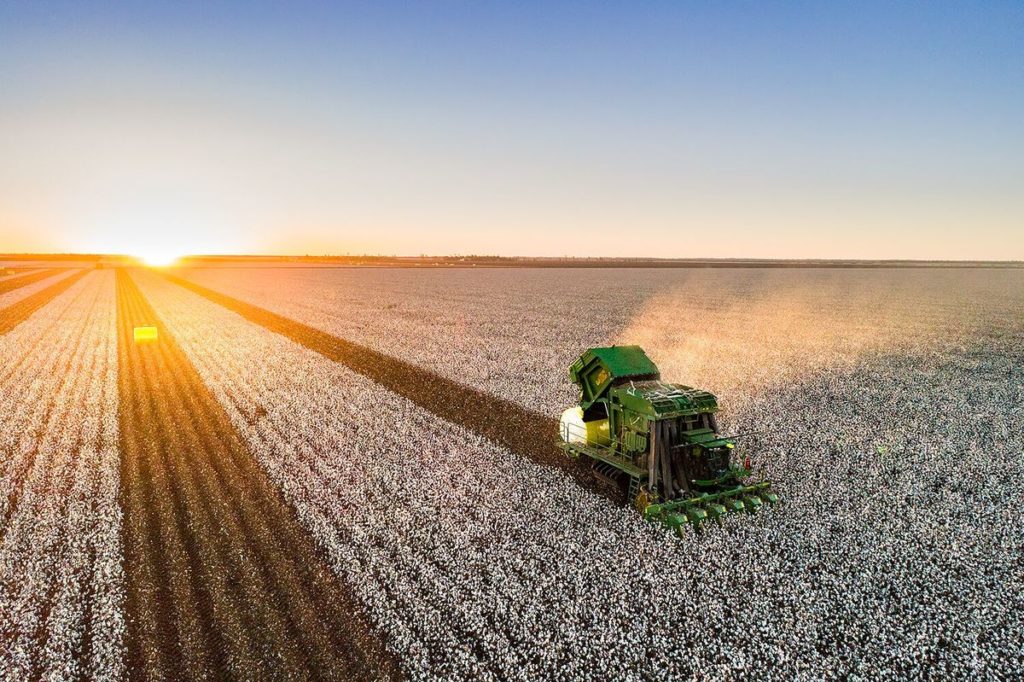When I first began looking at eco, ethical brands and the materials they use, I generally saw organic cotton being promoted as the most sustainable, kind option.
Without thinking about it very much, I took it for granted that organic was better, both in general and specifically with regards to cotton. After all, more chemical pesticides are used on cotton than on any other crop, and these pesticides harm the people working in and living around cotton plantations.
As I became more interested in sustainable fashion, looking into materials and their origins became increasingly important to me. I began to look into pesticides in cotton production and the more I did, the clearer the benefits of organic cotton seemed to be. I felt I understood why these conscious brands were choosing organic.

I began thinking that conventional cotton (GMO, farmed with pesticides, and usually without any accreditations regarding ethical and sustainable practices) was terrible. This isn’t an unsubstantiated thought; average, conventional cotton is the third most environmentally impactful material to produce, from cradle to gate, according to The Global Fashion Agenda. I started to choose organic cotton and felt satisfied that I was making a better choice.
But what if I wasn’t?
Organic Cotton and Fair Labour
It was when I looked at the Global Fashion Agenda’s data about cotton, I realised it was much more complex than just pesticides. The primary environmental concern seemed to be intensive water use but there are also plenty of human rights concerns in cotton.
It turns out, most of the world’s cotton is produced in China, India, USA, Pakistan, Brazil, Australia, Uzbekistan and Turkey. I was nervous to find that many of the places producing the most organic cotton, such as India, which produces over half of all organic cotton, were in some instances, involved with human rights violations and even child exploitation. In Gujarat, India, a child working on a cotton seed farm receives less than A$1 per day, and children may work up to 12 hours in extreme temperatures.

Women cotton pickers unload cotton blooms plucked from plants to make a bundle in a field in Meeran Pur village, north of Karachi
I started looking at different ways people were working to make the cotton industry more ethical for the people in it.
Fair trade certified cotton, for example, is an initiative focussing on so-called ‘developing countries’, which gives farmers a minimum price for their material. It also protects them from vulnerability if the cotton market price drops, and has other protective and supportive benefits. Fairtrade certified cotton also looks after not just the farm owners and their financial security, but all who work on farms. This was important to me as if something is produced far away, it’s very hard to know how things really work.
Australian Cotton
This is what led me to look into the Australian cotton industry. Why weren’t we using the large amount of cotton we produced ourselves? Surely, transparency in production would be easier when the producers are close by.
What interested me most about Australian cotton, is that it is traceable from bale to paddock.

Via ABC – Fashion Revolution – Who Made My Clothes campaign
What worried me about Australian cotton though, was the discovery that there is not any certified organic cotton in Australia. I thought organic cotton was the most sustainable option, and also protected humans from harm? Was this true?
I found that genetically modified cotton uses far less water (even though it still uses a lot), and Australian cotton is some of the most water-efficient in the world, having achieved a 40% increase in water productivity over the last decade. It produces the most ‘crop per drop’ of cotton than any other nation, at two and a half times the world’s average yield. There are some farmers working on ‘dry land’, meaning there is no irrigation, only rains feeding the crop. I was liking the sound of all of this.
But what about pesticides?
I had not however found answers to my concerns around water pollution due to pesticides. And I have not fully negated my concerns surrounding this, as the potential for the poisoning of living beings and the earth alike is real with pesticides.
At this point though, it’s worth noting that non-organic does not always mean pesticides, it can just mean genetically modified cotton. I didn’t realise this. There are some cotton plantations in Australia not spraying pesticides at all, though many do. Pesticide use is down 90% in Australia compared to previous use, in part due to tactics around harvest times, and in part due to the strains of cotton being used.
Australian cotton, which is genetically modified and uses less pesticides (though to varying degrees), is able to produce more fibre, more efficiently. This means land use is excellent, as it means less deforestation, therefore less carbon emissions, and less destruction of native flora and fauna.
The fact that local cotton is less water and pesticide-intensive, sometimes requiring no pesticides while maintaining higher yields from a smaller amount of land, was making genetically modified Australian cotton looks pretty good.
In terms of pesticides and human health, Australian studies which looked into how farmers currently view pesticides, and what practices they put in place when spraying, found that a growing amount of farmers are using protective gear when they do use harmful pesticides (not all are, but there are many that are hazardous).
There are recommendations and legislations concerning how cotton pesticides are to be used, to ensure they do not end up where they are not supposed to, leading to harm to people in surrounding communities, as well as the planet. All of this seems to mean that the lack of, or amount of harm caused by pesticides used in Australia, is dependent on the specific practices being implemented on each farm.
There’s a lot of information, and it seems, benefits and concerns with both Australian and organic cotton.

So what is more important? Organic or Australian grown?
If we support Australian cotton we financially support our own farmers and their increasingly sustainable practices.
- We produce far less emissions due to a lessened amount of imports and exports.
- We support more efficient water and land use.
- We support the ethical treatment of farmers based on standards set in law (assuming they are followed) concerning the treatment of workers.
- We support higher production transparency which allows us to, in theory, understand exactly what we as consumers are paying for, from which exact farm, if brands make the most of the crop’s traceability.
- We could also be supporting lower pesticide use or even no pesticide use.
If we support organic cotton, we know that we say no to all pesticides, which removes any concern for water pollution, or for health risks which stem from their use.
However, in doing this we also support additional, therefore wasteful, water use (organic doesn’t always mean rain-fed) and land clearing. We support the need to import a raw material from somewhere we may not be able to effectively trace or understand the practices of (unless there are fair trade certifications or similar, which do exist and which are positive), and that need to import also increases carbon emissions due to ‘fabric miles’.
At the moment, I’m leaning well towards Australian cotton, but the rabbit hole of research is never-ending, and I may yet find something that pushes me back the other way.
There are vast variables within the sectors of ‘organic’ and ‘Australian’ cotton, and perhaps that is the most important lesson in all of this: We should be pushing for transparency, for certification of sustainable and ethical practices at an individual farm or business level.
We should perhaps be more specifically critical of practices within parts of an industry, rather than make sweeping judgements which do not consider nuance within it. Until and unless, issues are found to be entirely systemic, or inherent in production.
We should be curious, we should ask questions, we should continue to try to do good, and do so by letting our opinions evolve if new information demands that.


